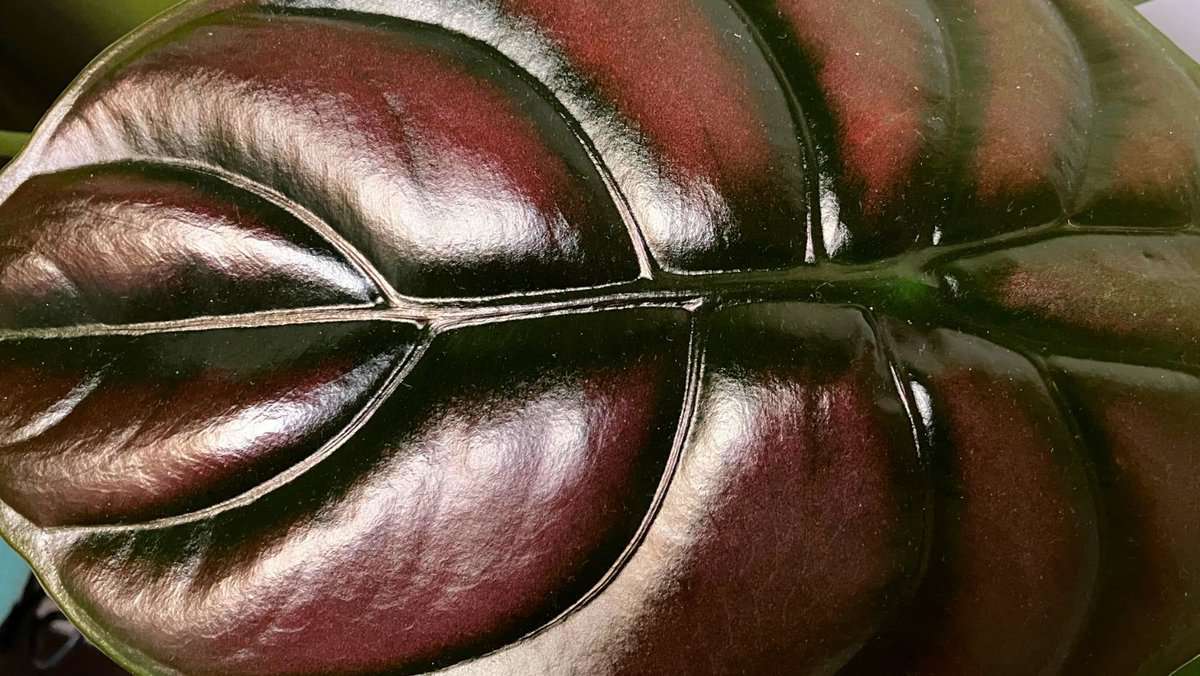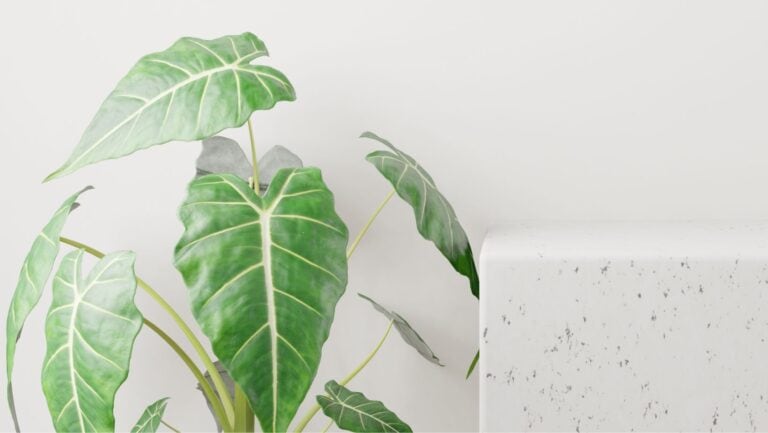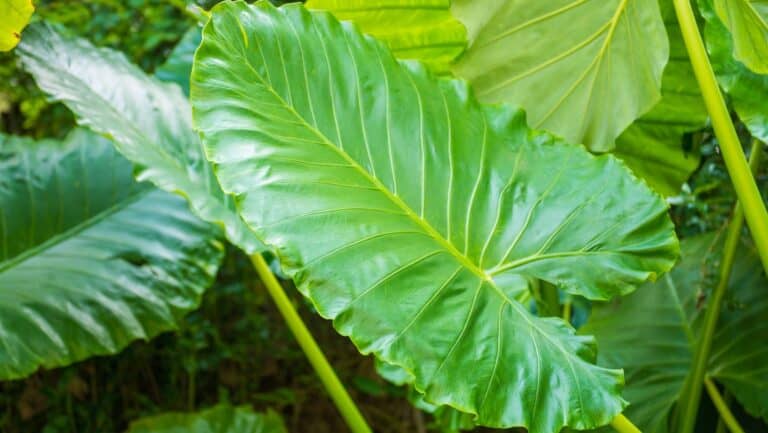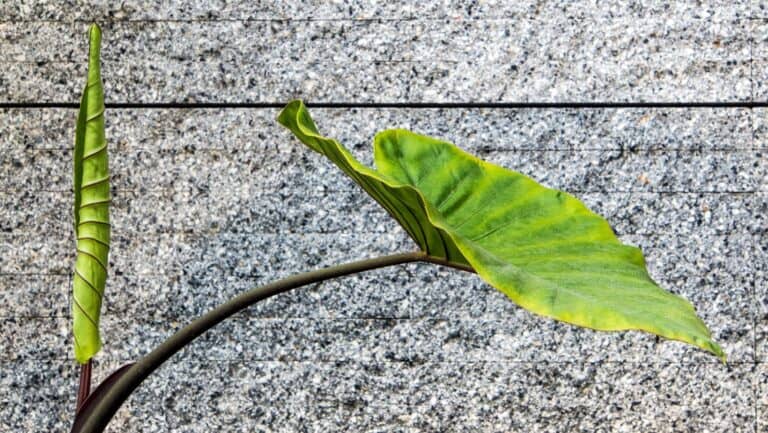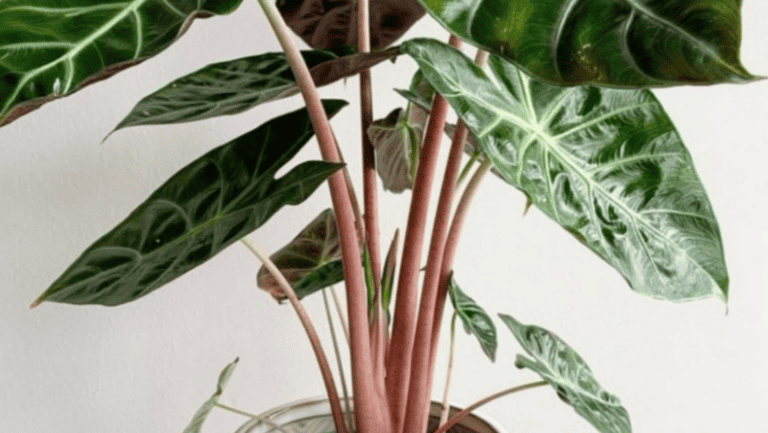Red Leaf Alocasia: Cuprea, Azlanii, Infernalis
We love Alocasia for the remarkable variety of leaf shapes and textures. Huge leaves, small leaves… Oval, or heart-shaped, or long wavy leaves… Smooth or velvety, glossy or matte – there is a variety for every taste.
Leaf color options are abundant too. All the shades of green are present, of course, but also grey and purple. Some Alocasia species have green leaves with a red underside, such as Alocasia Arifolia, Alocasia Lauterbachiana, Alocasia Reginula, and some others.
However, if you are looking for truly red leaves, your main focus will be on the three species from Borneo: Alocasia Cuprea, Alocasia Azlanii, and Alocasia Infernalis. In this article, we compare these three species and perform some background checks to better understand their nature and provide them with better care.
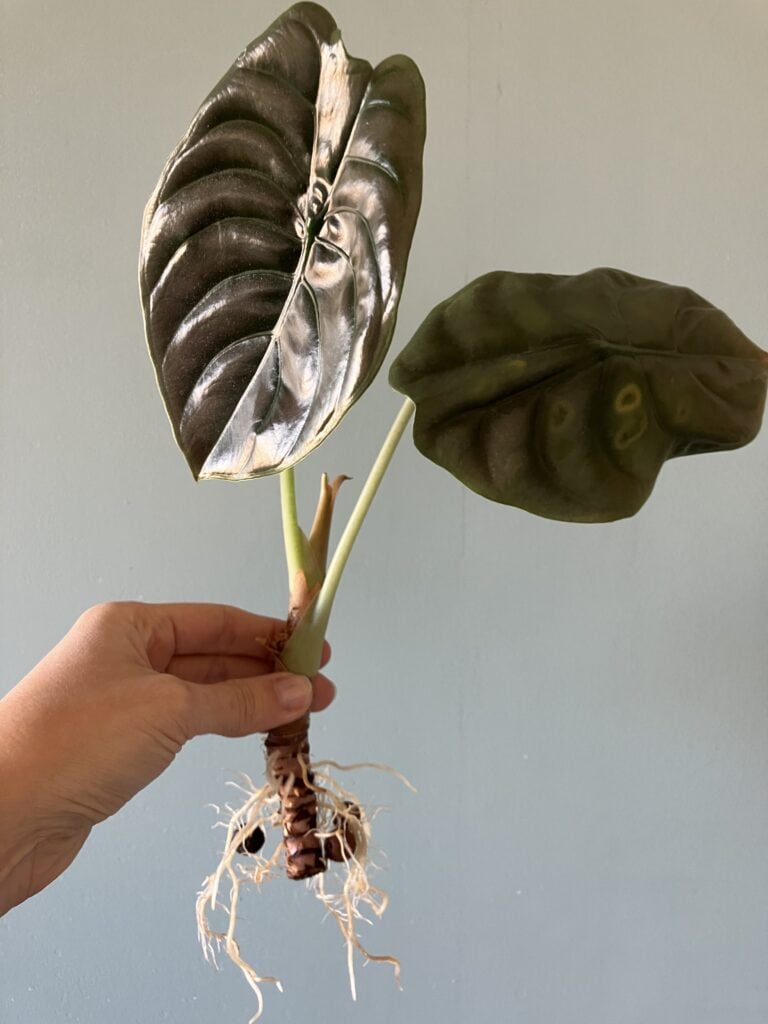
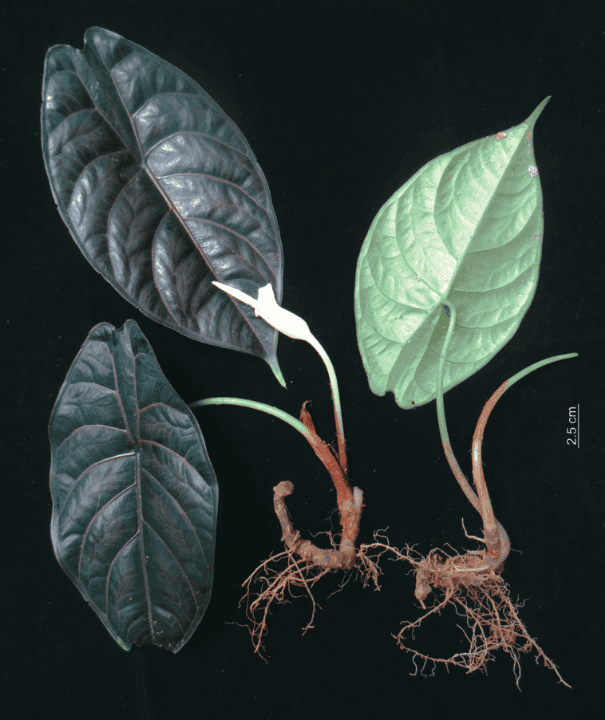
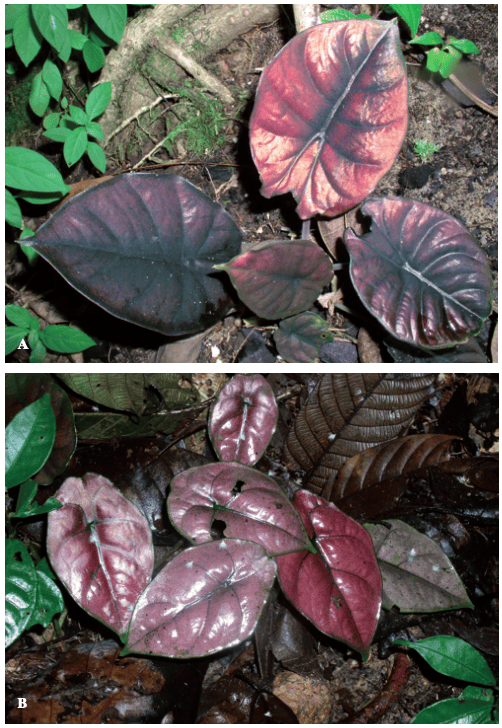
Where Do Red Alocasia Come From?
As already mentioned, the three redheads are all coming from Borneo. So, if you dream of witnessing them in their natural surroundings, that’s your destination. However, Borneo is the largest island in Asia and you might need more precise directions.
All three species grow in the northern part of the island – in the Malaysian states of Sabah and Sarawak and in Brunei.
Apart from being neighbors and having red leaves these three species of Alocasia are pretty different. Let’s have a closer look at each one of them separately.
Alocasia Cuprea
Let’s start with the grandma. Alocasia Cuprea has been known and cultivated since the 1860s. You can easily find it in retail under its fancy marketing nickname ‘Red Secret’. In case you wondered, Red Secret is not a hybrid, it’s 100% Alocasia Cuprea. Through the decades of cultivation, this beauty has been firmly standing by her natural traits. As David Burnett describes it, this species is remarkably non-variable.
That said, with her outstanding looks, Alocasia Cuprea has been attracting gardeners and has been used in several hybrids. The best known of them is doubtfully Alocasia × sedenii (Alocasia Cuprea x Alocasia Longiloba ‘Lowii’). The other widely cited hybrid is Alocasia x chantrieri (Alocasia Cuprea x Alocasia Sanderiana). Neither of them is patented.
LariAnn Garner attempted a hybridization with Alocasia Odora, which she called ‘Maroon Shelds’, but it did not result in a reproducible species.
What we love about Alocasia Cuprea is her heart-shaped deep purple leathery leaves, bulging between the veins, like the abdominal muscles of an athlete. In the wild, those leaves can grow to an impressive 60 by 40 cm (over 22 by 15 inches).
Behind those spectacular leaves, the stems (which are actually petioles) are nothing special, mostly pale green. Yet, the red vibe does not stop at leaves. Alocasia Cuprea is red to the very soul. Its rhizome has an impressive sanguine core.
Alocasia Azlanii
Alocasia Azlanii is smaller than Alocasia Cuprea. This compact beauty is barely 30 cm (1 ft) tall. She is also a younger member of the family. She was described in 2016. It does not mean that it did not exist before, but it was not recognized as a separate species. In leaf shape, Alocasia Azlanii resembles Alocasia Infernalis, even though Cuprea is her closest relative.
Why Azlanii? Alocasia Azlanii is named after plant collector Azlan Pandai of the Brunei National Herbarium. To draw attention to her red leaves this plant is sometimes nicknamed ‘Red Mumbo’ in retail.
The leaves of Alocasia Azlanii have a more regular oval shape narrowed at the ends and are smaller than those of Alocasia Cuprea – no bigger than 20 by 11 cm (7 by 4 in). While the upper surface of the leaves is dark coppery purplish green with purple veins, the lower surface is surprisingly pale green.
Habitat. As beautifully described by Peter Boyce, Alocasia Azlanii grows on ‘well-shaded moist ground above flood level on banks of a shallow tributary of the Benutan river, which drains mixed dipterocarp forest on sandy clays’.
Alocasia Infernalis
Alocasia Infernalis is truly remarkable. First of all, she is not as close to Alocasia Cuprea, as she might seem. The resemblance is rather superficial and is limited to the overall appearance. Some of her botanical features led to her inclusion in the Alocasia Scabriscula group. But there again she stands aside without apparent close relatives.
Size. Alocasia Infernalis is not as tall as Alocasia Cuprea, but not as short as Alocasia Azlanii either. She grows to 55 cm (a little under 2 ft) tall, but, at the same time, has a dwarf habit, as noted by Peter Boyce, which is unmatched by any other Alocasia species.
Alocasia Infernalis does not have a nickname. I guess Infernalis speaks for itself. The name of this species was inspired by the vampire squid (Vampyroteuthis infernalis) that boasts a no-less remarkable ‘hellish’ appearance.
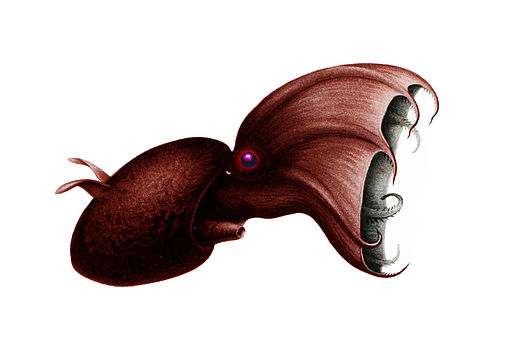
Source: Carl Chun, Public domain, via Wikimedia Commons
The leaves of Alocasia Infernalis are purple on both sides and generally thinner, and less leather-like than those of the two other red Alocasia species described here. The shape is similar to that of Alocasia Cuprea, but the size is much smaller. Even though the leaves can grow up to 25 cm (almost 10 in) long but are usually much smaller and typically reach the size of about 15 by 10 cm (6 by 4 in).
Alocasia Cuprea vs. Alocasia Azlanii vs. Alocasia Infernalis (Summary Table)
| A.Cuprea | A.Azlanii | A.Infernalis | |
|---|---|---|---|
| Height | 80 cm / 2ft 7in | 30 cm /1 ft | 55 cm / 1ft 10 in |
| Leaf size | 60×40 cm / 23×15 in | 20×10 cm / 8×4 in | 15×10 cm / 6×4 in |
| Leaf shape | Egg-shaped (ovate) | Closer to regular oval (ovate-elliptic) | Egg-shaped with a steeper narrowing toward the tip (ovato-triangular) |
| Leaf color | Upper surface glossy bronze-green, darker near the primary veins, lower surface deep purple | Upper surface dark coppery purplish green, lower surface pale green | Deep purple on both sides, upper side darker in shade and glossy |
| Habitat | On slopes in the rainforest, 1,000 to 1,500 m asl | On river banks, below 500 m asl | Valley bottoms in lowland forest |
| Humidity | Consistently high | Moist | Moist to ever-wet |
| Light | Filtered | Well-shaded areas | Heavy shade |
| Substrate | A wide variety of substrates including ultramafic rock, sandstone, and limestone | Rich sandy clays | Rich red sandstone-derived clay-loams |
How Do You Take Care of Red Leaf Alocasia?
We’ve seen where our three redheads grow in the wild – in humid rainforests, away from direct sunlight, on rich and well-draining substrates.
What does it tell us about their character and care requirements? Apparently, they like humidity. And nutrients. And clay. And good drainage. It looks like a perfect match for LECA! I moved my Alocasia Cuprea to LECA about a year ago and she loves it. On the other hand, I kept her sister in the soil till recently and she wasn’t unhappy either. It’s important to give her enough food and water and make sure that the substrate is well-draining.
Also, apparently, red-leaf Alocasia species are not fans of direct sunlight, that can cause burns on the leaves. I would not take the words ‘well-shaded’ or ‘deep shade’ too literally though. Translated into our indoor conditions, a spot that would best mimic a ‘shady bank of the Benutan river’ might be right next to the window!
REFERENCES

